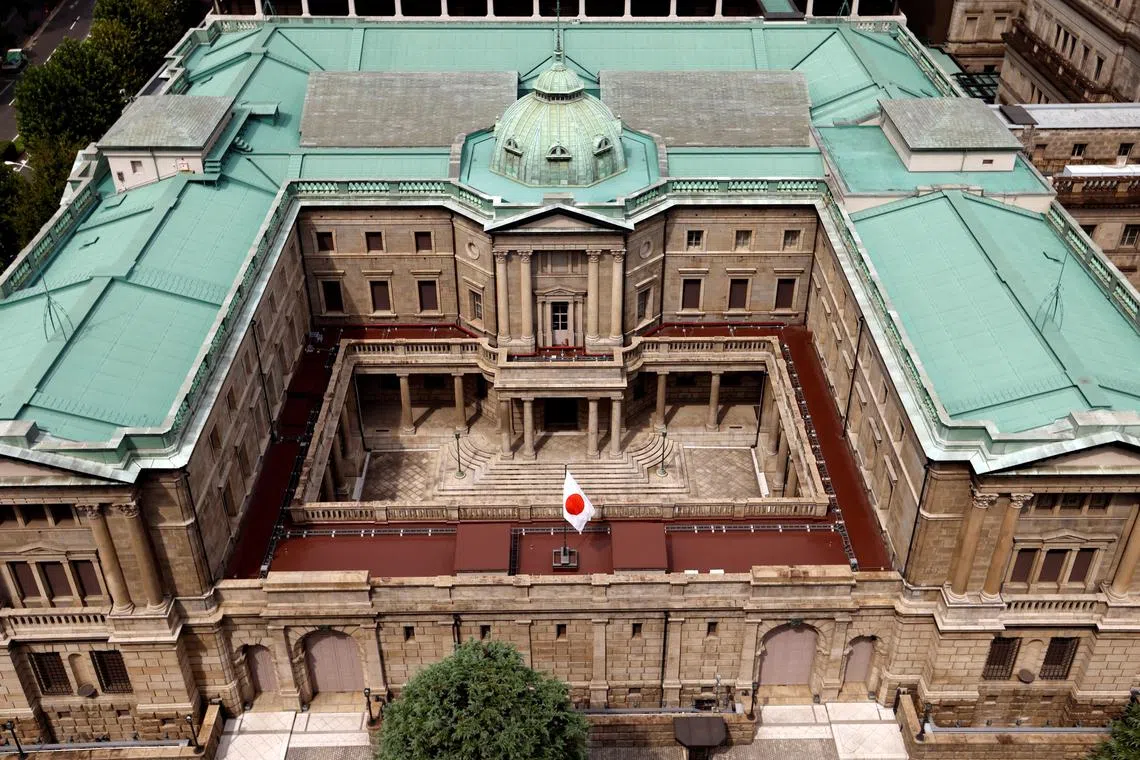More pain for US Treasuries when Japan ends negative rate policy
Sign up now: Get ST's newsletters delivered to your inbox

Portfolio managers and central banks around the world are keeping a watchful eye on any move by the Bank of Japan.
PHOTO: REUTERS
Follow topic:
TOKYO – Japan’s era of negative interest rates will end in the coming months and the implications for world markets will be enormous, with US Treasuries set to suffer the most, according to the latest Bloomberg Markets Live (MLIV) Pulse poll.
The Bank of Japan (BOJ) is likely to unwind its unusual policy of sub-zero rates during the first half of 2024, the majority of 315 respondents said.
The move will bring an end to a bold experiment the bank embarked on in 2016 – one that has recently placed it at odds with other major central banks that have been tightening aggressively to combat inflation.
What the BOJ does, and when it does it, will reverberate through world markets. The biggest consequence, according to MLIV Pulse respondents, is more turbulence for the vast amount of Treasuries. This is as higher yields in Japan will encourage fund repatriation by Japanese investors whose huge holdings include US, European and Australian debt.
“A shift in the BOJ’s policy could slow the export of capital from Japan as yields become more attractive locally than they were before,” said Mr Martin Whetton, head of financial markets strategy at Westpac Banking Corp in Sydney.
Thirty-seven per cent of participants said Treasuries will face the most severe impact from BOJ governor Kazuo Ueda shifting away from super-accommodative policy. Declines in the US dollar may add to the misery; 36 per cent expect pain for the currency that the US debt is denominated in.
Portfolio managers and central banks around the world are keeping a watchful eye on any move by the BOJ, which has made negative rates and yield curve control the cornerstone of its policy to fight stagnant prices. It rocked global markets by raising the cap on benchmark 10-year bond yields in late 2022, and again at the end of July, pushing up bond yields.
“Some form of normalisation is probably necessary,” said DBS Bank senior rates strategist Eugene Leow. “This could mean upward pressure on five- to 10-year developed market yields as higher Japanese government bond yields spill over.”
Japanese investors are the biggest foreign holders of US government bonds, with more than US$1.1 trillion (S$1.5 trillion) at the end of August, according to data from the US Treasury Department.
Life insurers dumped a net 196 billion yen (S$1.8 billion) of foreign bonds in the April-to-September period, following a record 8 trillion yen of sales in the previous six months, according to Ministry of Finance data.
The MLIV Pulse survey shows that 61 of the respondents expect global bond market volatility to rise when the BOJ changes the policy, with most respondents predicting that the historic step will happen in 2024.
“The market will probably be very jittery until traders and investors get used to a world with positive yields,” said market strategist Ayako Sera at Sumitomo Mitsui Trust Bank in Tokyo. “It’s like a big stone being thrown into a pond where there has been no wind.”
Treasuries, traditionally the pillar of stability in many savings and investment portfolios, are already more volatile than stocks, at least by one measure. The combination of the aggressive policy tightening by the US Federal Reserve and the flood of bond sales by the US government has imposed historical losses, especially on long-duration debt.
This yield gap has been widening, making the yen the worst performer among Group of 10 currencies so far in 2023. The Japanese currency has lost more than 12 per cent against the greenback this year, ending last week at 149.86 per US dollar. BLOOMBERG

